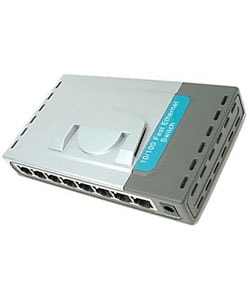For signal degradation and timing reasons, coaxial Ethernet segments had a restricted size which depended on the medium used. For example, 10BASE5 coax cables had a maximum length of 500 meters (1,640 feet). Also, as was the case with most other high-speed buses, Ethernet segments had to be terminated with a resistor at each end. For coaxial-cable-based Ethernet, each end of the cable had a 50-ohm resistor attached. Typically this resistor was built into a male BNC or N connector and attached to the last device on the bus, or, if vampire taps were in use, to the end of the cable just past the last device. If termination was not done, or if there was a break in the cable, the AC signal on the bus was reflected, rather than dissipated, when it reached the end. This reflected signal was indistinguishable from a collision, and so no communication could take place.
A greater length could be obtained by an Ethernet repeater, which took the signal from one Ethernet cable and repeated it onto another cable. If a collision was detected, the repeater transmitted a jam signal onto all ports to ensure collision detection. Repeaters could be used to connect segments such that there were up to five Ethernet segments between any two hosts, three of which could have attached devices. Repeaters could detect an improperly terminated link from the continuous collisions and stop forwarding data from it. Hence they alleviated the problem of cable breakages: when an Ethernet coax segment broke, while all devices on that segment were unable to communicate, repeaters allowed the other segments to continue working - although depending on which segment was broken and the layout of the network the partitioning that resulted may have made other segments unable to reach important servers and thus effectively useless.

"Ethernet Repeater"
Source: http://www.l-com.com/lcom_emails/2005/121305/images/ethernet_repeater.gif
People recognized the advantages of cabling in a star topology, primarily that only faults at the star point will result in a badly partitioned network, and network vendors started creating repeaters having multiple ports, thus reducing the number of repeaters required at the star point. Multiport Ethernet repeaters became known as "Ethernet hubs". Network vendors such as DEC and SynOptics sold hubs that connected many 10BASE2 thin coaxial segments. There were also "multi-port transceivers" or "fan-outs". These could be connected to each other and/or a coax backbone. These devices allowed multiple hosts with AUI connections to share a single transceiver. They also allowed creation of a small standalone Ethernet segment without using a coaxial cable.

"Ethernet Hub"
Source: http://cdn.overstock.com/images/products/P953499.jpg
Ethernet on unshielded twisted-pair cables (UTP), beginning with StarLAN and continuing with 10BASE-T, was designed for point-to-point links only and all termination was built into the device. This changed hubs from a specialist device used at the center of large networks to a device that every twisted pair-based network with more than two machines had to use. The tree structure that resulted from this made Ethernet networks more reliable by preventing faults with (but not deliberate misbehavior of) one peer or its associated cable from affecting other devices on the network, although a failure of a hub or an inter-hub link could still affect lots of users. Also, since twisted pair Ethernet is point-to-point and terminated inside the hardware, the total empty panel space required around a port is much reduced, making it easier to design hubs with lots of ports and to integrate Ethernet onto computer motherboards.
Despite the physical star topology, hubbed Ethernet networks still use half-duplex and CSMA/CD, with only minimal activity by the hub, primarily the Collision Enforcement signal, in dealing with packet collisions. Every packet is sent to every port on the hub, so bandwidth and security problems aren't addressed. The total throughput of the hub is limited to that of a single link and all links must operate at the same speed.
Collisions reduce throughput by their very nature. In the worst case, when there are lots of hosts with long cables that attempt to transmit many short frames, excessive collisions can reduce throughput dramatically. However, a Xerox report in 1980 summarized the results of having 20 fast nodes attempting to transmit packets of various sizes as quickly as possible on the same Ethernet segment. The results showed that, even for the smallest Ethernet frames (64B), 90% throughput on the LAN was the norm. This is in comparison with token passing LANs (token ring, token bus), all of which suffer throughput degradation as each new node comes into the LAN, due to token waits.



No comments:
Post a Comment